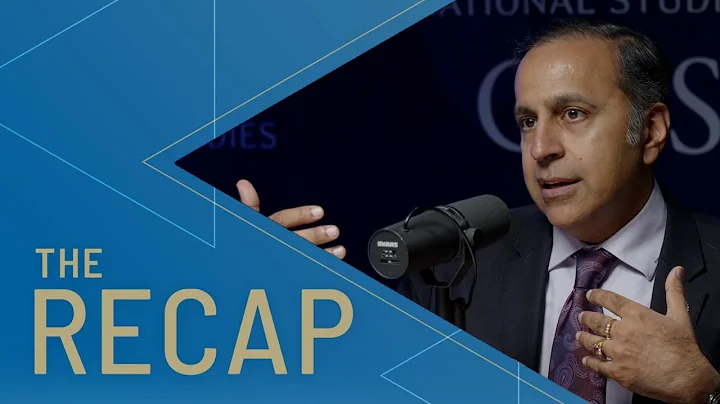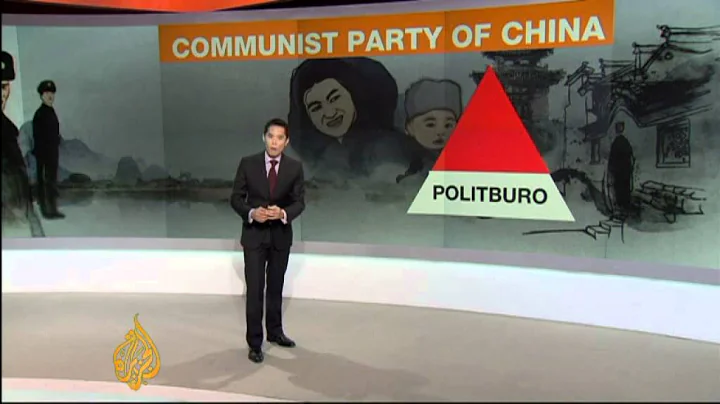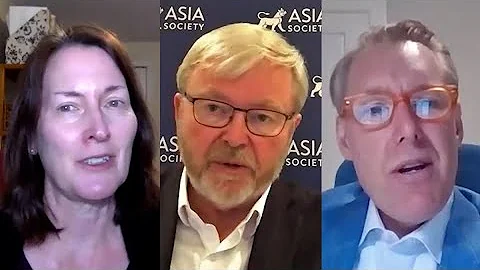In 1943, Chen Yi, acting commander of the New Fourth Army, was squeezed out by Rao Shushi during the Huanghuatang Rectification Movement. Comrade Chen Yi went to Yan'an to participate in the Seven Congresses according to the central government's wishes. After that, he returned to East China to work; as soon as Chen Yi left, he For two years, he did not return to East China until the Japanese surrender in 1945. Chen Yi's whereabouts affected the hearts of many people, especially Su Yu, who had spent time with him day and night, and could not conceal his excitement after learning that he had returned to East China.

Su Yu and Chen Yi took a group photo
In 1945, in order to adapt to the future war situation, the Central Committee of the Communist Party of China adjusted the organizational relations in East China and established East China Bureau and Central China Branch. At the same time, in order to cope with the possible civil war, the Central Committee ordered each theater to shrink its troops and establish a suitable army. The armed forces in the field, Shandong Field Army , Central China Field Army and military regions were established one after another; Chen Yi was appointed commander of the Shandong Field Army and commander of the New Fourth Army; because Su Yu created brilliant achievements in the anti-Japanese counterattack, the central government decided to reuse him and appointed him as The newly-established commander and political commissar of the Central China Field Army; after the adjustment, Huaye was militarily subordinate to the New Fourth Army Military Headquarters and was also under the direct control of the Central Military Commission. The new organizational relationship gave Su Yu's military command a lot of room for development.
Chen Yi has gotten along closely with Chairman Mao in the past two years. In addition to participating in the preparation of the Seventh National Congress, he also consulted the party, government and military documents reported to the central government from base areas across the country. His insights and experiences are different from those during the Anti-Japanese War; Su Yu The comrades have been fighting in the Japanese-dominated areas for a long time. They have accumulated rich practical experience in frequent battles, especially in the independent establishment of the Jiangsu, Zhejiang and Anhui base areas. The three columns of Huaye took the lead in completing the transformation from decentralization to concentration, from travel to mobile warfare, and fought for the large corps. Having accumulated valuable experience, when they met this time, their status and structure were no longer what they used to be. Facing the upcoming civil war, they had different strategic considerations.

Su Yu during the War of Liberation
First of all, there was the problem of troop construction. After the Japanese surrender, a military vacuum appeared in the Northeast. The Central Committee of the Communist Party of China mobilized elite troops from major strategic areas and transported them to outside the customs. Huang Kecheng's third division and Ye Fei's first column were successively transferred. Soon the New Fourth Army headquarters prepared to mobilize Wang Bicheng's column and one of each division of the New Fourth Army to enter Shandong. The three columns of Ye Fei, Tao Yong, and Wang Bicheng were Su Yu's most comfortable troops. They could fight alone or in coordination. They were Su Zhong. If the main force in the region is transferred according to the military method, it will seriously damage Huaye's combat capabilities. Su Yu believes that in the upcoming civil war, the Central Soviet battlefield is likely to bear the brunt. Without a few columns that can fight hard, it will be difficult to stop the reactionaries from rampaging. Invasion.
Su Yu successively called the Central China Branch and the New Fourth Army Headquarters, hoping that Wang Bicheng would stay in Central China. In addition, the original organization should be maintained as much as possible in the recruitment and deployment of troops to maximize the combat effectiveness of the troops. Su Yu's telegram did not get the approval of the New Fourth Army's military headquarters and the main leaders of the Central China Branch. During the years of the Soviet Union's anti-Japanese war, Su Yu rarely changed what he was sure about. For this reason, he did not hesitate to risk standardism and directly reported it to the Central Military Commission. Generate electricity, and emphasized in the telegram: " has been suggested to the military headquarters and branch offices, but has not been adopted." This may seem like a complaint to outsiders, but Su Yu's telegram was approved by Liu Shaoqi ( During the negotiation of in Chongqing , Liu Shaoqi took over), he called back to the Central China Bureau and the New Fourth Army Headquarters: " The divisions will be organized as undivided as possible... Wang Bicheng will stay in Huaye ." In this way, Huaye will at least retain Wang Bicheng and Tao Yong. A main combat column.

Gaoyou has an important strategic position.
Secondly, it advocated the Battle of Gaoyou Shaobo. Gaoyou and Shaobo are adjacent to Yangzhou to the south and two Huaihe Rivers to the north. They are of great strategic significance. The Kuomintang claimed that " the canal is the gate, and Gaoyou is the lock." As long as Gaoyou is captured, You can " unlock the door, go north along the canal, and go straight to the Huaihe River", thereby achieving the purpose of dividing the Central China Liberated Area; Su Yu also saw the importance of Gaoyou, and proposed to launch two campaigns at the north and south ends of the central Jiangsu area, one One is the Battle of Shaobo in Gaoyou, and the other is the Battle of the Eastern Section of Huaihai Road.
The purpose of organizing these two battles is to protect the two Huaihe Rivers on the one hand, and the most important thing is to open up a broad battlefield to create advantageous conditions for the field army to fight in the base area at the beginning of the all-out civil war, and to give full play to our army's mobile warfare and guerrilla warfare Specialties; In December 1945, Su Yu, together with the main leaders of the Central China Branch, called the Central Military Commission and the New Fourth Army Military Headquarters to report the plan for the Shaobo Battle of Gaoyou, which was approved by the Central Committee two days later; just when Su Yu was dispatching troops to move to the preset battlefield , a telegram from the central government to Chen Yi changed the original deployment. It turned out that the Kuomintang was mobilizing troops to move north along Jinpu Road. The Central Military Commission asked Chen Yi to lead the Shandong Field Army to fight on the outside to prevent the enemy from moving north. At the same time, it asked whether it was necessary to continue the Shaobo campaign raised by Su Yu, the former electrician, and whether it was necessary for Su Yu to lead his troops. Go to the south line of Jinpu Road to cooperate with mountain operations.

Battle of Shaobo in Gaoyou
Chen Yi completely obeyed the orders of the Central Military Commission. At the same time, he had always wanted to integrate the Huaye combat troops into the entire Huaihai area combat system, so he immediately ordered: "Su (Yu), Tan (Zhenlin) led the six The 8th and 9th Zongs quickly gathered in the southern section of Jinpu Road and carried out a grand strategic attack, striving to control the Baili to 200li railway in one fell swoop and annihilate the stubborn 1st to 2nd divisions heading north , 6 and 8. The column should not be used against Shao Bo of Gaoyou but should focus on dealing with Jinpu Road "; Su Yu, who was preparing for the battle on the front line, was quite embarrassed when he received the order. The army commander was completely opposite to his strategic attack direction. The three columns went west, and the entire Soviet Union Only the newly formed Hua Seventh Column and local troops are left, and they will not be able to defeat Gaoyou and Shao Bo anyway; in addition, Chiang Kai-shek is very determined to open up the transportation trunk lines, and the main force's westward advance is likely to stimulate Nanjing. Attracting the enemies on the Xu Beng Line southward, the breakthrough battle on the southern line of Jinpu Road evolved into a large-scale decisive battle. This was very unwise in the early days of the Liberation War.
Seeing that the enemy's 25th Army was showing signs of moving north to defend Gaoyou, and the battle was imminent, Su Yu immediately drafted a thousand-word telegram, urging the Shaobo Battle of Gaoyou to be carried out first. In the telegram, Su Yu analyzed the situation in East China in detail, and Looking at the current deployment of the Kuomintang's troops in North China, the focus should be on opening up the eastern section of Longhai Road to separate the two liberated areas of Central China and Shandong, and then use the North Jiangsu Plain to give full play to its mobility advantage, either to attack Shandong or south to the Huaihe River; on the southern route, twenty-five The army is bound to capture Gaoyou Shao Bo. If he succeeds, Central Soviet Union will face the danger of being divided. At that time, the abundant resource supply in the central Soviet base area will be quickly lost, and the rear area of Yanfu area will become a battlefield. Whether it is military or political , its impact will be immeasurable. Su Yu's analysis in the telegram was completely in line with the development pattern of subsequent wars and had a strong strategic guiding significance; in addition, in terms of troop deployment, Su Yu proposed that if Shao Bo of Gaoyou loses, the canal line will not be owned by me. At that time, Central China Region troops will be tied to the canal, greatly reducing the available maneuverability. This was also verified in the Lianghuai Defense War.
Although Chen Yi agreed with Su Yu's opinions on fighting on the southern line, he still detained the Sixth Column in the south of Jinpu Road. Even so, Su Yu successfully liberated Gaoyou and Shao Bo even though three were missing and one was missing, completing the strategic deployment of actively creating a battlefield.

General Su Yu
The third discussion of different opinions between Su Yu and Chen Yi was the choice of our army's combat direction after the outbreak of the civil war, and the resulting discussion on the issue of superior combat readiness in Huaye's troop deployment. Chen Yi advocated that the two major corps, Shanye and Huaye, cooperate in campaigns to create a general situation in the Jinpu section of Huainan, and believed that "if Huainan is not guaranteed, even if there is a breakthrough in Central Jiangsu, the gains will outweigh the losses."
Su Yu, however, believed that due to the disparity in strength between the enemy and ourselves in the early stages of the civil war, our army should rely on various favorable conditions such as the weather, location, and people in the base area for operations, and should not rush to the outside to fight the enemy decisively. Therefore, he hoped that Shandong should wait for Soviet Central to obtain one or two first After the victory in the first battle, he went west to Jinpu Road; as the Kuomintang successively captured the two liberated areas east and west of Jinpu Road, Chairman Mao drafted a telegram to East China for the Military Commission , explicitly ordering to prevent the Kuomintang from going north along Jinpu Road and ensuring that 900 The southern line with a population of 10,000 people is safe; this order strengthened Chen Yi's determination to mobilize the Central Jiangsu troops to move westward, but at the same time, in order to accommodate the Huaye officers and soldiers' intention to fight in Central Jiangsu, he proposed to form two field armies in Central China to take care of Huainan and Central Jiangsu. Two directions of combat.

Suyu
Suyu discussed with the Central China Bureau and the commander of Huaye and believed that Huaye was unable to complete Chen Yi's order to fight in two directions and could only concentrate its forces on the main combat direction. Chen Yi believed that the main direction of the enemy's attack could not be determined at present. The battlefield cannot be preset in advance. In late June 1946, the Central Military Commission also joined this discussion. Chairman Mao drafted the "Strategic Plan for the Taihang District and Shandong District" and the "Operation Supplement to the Southern Front", which formulated the operational directions for Shandong and Central China. Strategically deployed, the two operational plans were basically consistent with Chen Yi's proposed Jinpu Road operation. In the first stage, the Central Military Commission set the battlefield in the Central Plains area centered on Xuzhou to prevent the Kuomintang from opening up the Jinpu Road and eliminate the enemy's effective forces in the field. In the second stage, fighting on the outer front will lead the war to the Kuomintang-controlled area. The main force of Huaye will march westward to Huainan to cooperate with the Shandong Field Army in fighting in Huaibei.
At this point in the discussion, the central and branch leaders have unified their operational thinking. It is said that as a frontline commander, they can execute according to the plan. However, Su Yu insisted that the central Jiangsu area will be the main direction of the enemy's attack. He analyzed in detail the benefits of internal operations, and He pointed out the importance of the base areas in the Central Soviet Union, and pointed out that the civilian population, food, and combat areas in the outer line operations were not conducive to field operations. Finally, he proposed that if the Central Soviet Union fought well, the enemy forces on the southern front could still be contained, and he hoped that at least there would be a battle first. Go and explain to the people and officers and soldiers in the base area. After receiving the telegram, the central government seemed to have made some move. It immediately called Central China and Shandong to temporarily suspend the deployment of troops and wait for discussions with Chen Yi before making a decision.

Su Yu
In the end, as the Kuomintang advanced step by step, the Central Committee of the Communist Party of China agreed to Su Yu's strategic deployment. It first fought in Central Jiangsu to see and conduct reconnaissance; in this way, the strategic deployment from the branch to the central government was finally made at Su Yu's insistence. Major adjustments. Facts have proved that the external battle did not go smoothly as Su Yu expected. In the Battle of Si County in July, Shanye retreated to the Huaihe River, and the defense battles of the Shisui Line and Pinghan Line in North China ended unfavorably. In contrast, in the Central Jiangsu area, the Chinese army led by Su Yu Afterwards, the central government repeatedly adjusted the time for external operations, and fighting on the inside became the defensive policy in the early stages of the civil war. From central Jiangsu to northern Jiangsu and then to Shandong, by 1947 In the middle of the strategic counteroffensive, the selection of external operations gradually matured.
In short, the strategic discussion in mid-1946 established the operational route in East China, opened up a vast battlefield for the Central China Field Army, and enabled Huaye to successfully prevent the Kuomintang's barbaric invasion in the early stages of the civil war, demonstrating Comrade Su Yu's advanced thinking. Military vision and the fearless spirit of being responsible for history and the people; on the other hand, from the central government to theater commanders, as leaders, they can objectively listen to the different opinions of frontline commanders, and as subordinates, they dare to face up to problems and put forward different opinions, and through fierce and objective discussions The discussion finally reached an agreement, which is a magic weapon for our army to continue to win, leaving us with valuable revolutionary experience.





















